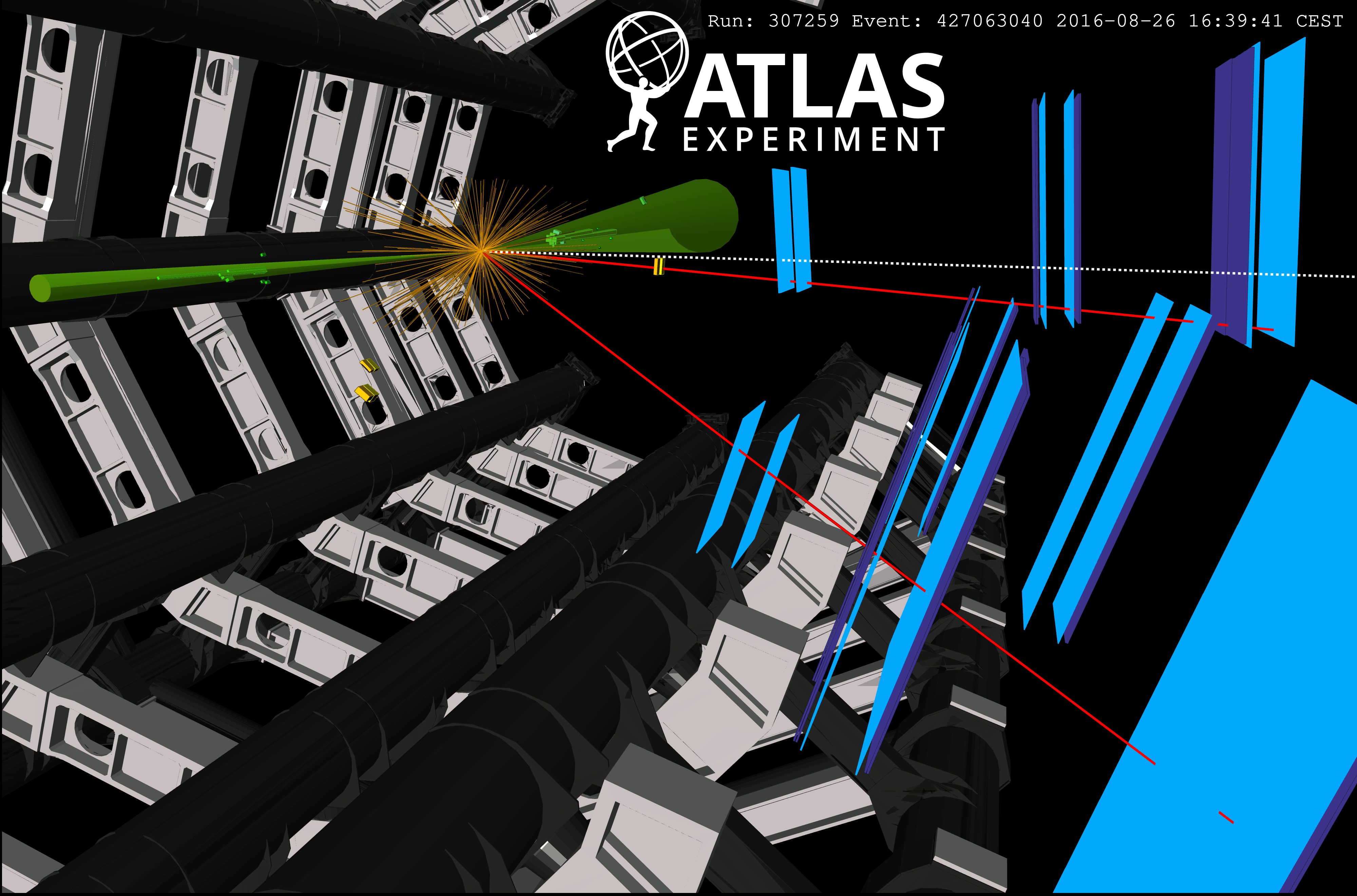Z bosons zoom through quark–gluon plasma as jets quench
25 August 2020 | By

When beams of lead ions collide head-on in the LHC, the matter comprising the nuclei melts away and forms a high-temperature quark–gluon plasma (QGP) – an extended region of interacting quarks and gluons. As high-momentum jets of particles attempt to traverse this region, their energy and radiative properties change through interactions with the QGP medium. This phenomenon is known as jet quenching. Its study can help physicists understand the properties of the QGP and give new insight into the theory of the strong nuclear force (quantum chromodynamics).
The ATLAS Collaboration has performed extensive studies of how jets are quenched in the QGP. The emerging picture is that the quarks and gluons lose energy in the medium, fragmenting into fewer high-momentum particles. The remaining energy is redistributed by the QGP and appears as low-momentum, “thermal” particles over a broad area around the jet. For example, studies have shown that the total momentum in a jet is depleted relative to expectations from proton–proton collisions and that the distribution of particles inside the jet is modified.
However, one challenge in interpreting these measurements is that they are made after the quenching process – so it is impossible to tell whether a given jet has traversed the medium or merely glanced at it. This can be overcome by studying events where the jet is produced as a partner to a high-momentum photon, with the two moving in opposite directions in the detector. Since photons do not interact via the strong nuclear force they pass through the QGP medium without being affected. Thus, photons serve as a “tag” or a control experiment for the jet’s momentum before quenching. ATLAS physicists have previously used this key feature to measure jet quenching and jet structure modification in photon–jet events using lead–lead data recorded in 2015.
In new results released today based on the large lead–lead collision dataset accumulated in 2018, ATLAS researchers applied this same strategy to measure jet quenching tagged with another particle: the Z boson. Similar to photon-tagged events, a jet can be produced alongside a Z boson which decays into particles (two electrons or two muons) that do not interact with the QGP medium. An example of such a collision event can be seen in Figure 1, where a Z boson decays into two muons (red lines).
Z bosons can be measured in the low momentum range, where the effects of jet quenching are expected to be large. This region is particularly interesting to explore, despite being experimentally difficult to access.

Unlike photons, Z bosons can be measured in a low momentum range, where experiments have difficulty triggering on photons and distinguishing them from various background particles. At these low scales, the jet momentum matches the QGP temperature scale more closely and quenching effects are expected to be large. This region is thus particularly interesting to explore, despite being experimentally difficult to access.
The new ATLAS result measures the production of charged particles opposite a Z boson. The measurement compares lead–lead collisions and proton–proton collisions, using the leptonic Z boson “tag” to select a similar population of jets arising predominantly from high-momentum quarks. Physicists looked at the charged particle yield for each tagged Z-boson event, and measured the ratio of this quantity between head-on (“central”) lead–lead and proton–proton events (as shown in Figure 2). At large transverse momentum (> 3 GeV), there are significantly fewer charged particles in lead–lead collisions, consistent with the picture of energy loss and softer fragmentation in the QGP. At small transverse momentum (< 3 GeV), there are significantly more charged particles, reflecting the thermalization of the lost energy by the medium.
Researchers then compared the results to a variety of state-of-the-art theoretical calculations, which describe the jet-quenching process according to different models. These calculations all indicate a suppression of high-momentum particles, with a corresponding enhancement of low-momentum particles, but each prediction differs quantitatively from the rest. These comparisons highlight the value of new experimental data to constrain theory in this particular area. The upcoming Run 3 of the LHC should bring many more Z boson events in lead–lead collisions – opening further avenues for these discriminating measurements.
Links
- Medium-induced modification of Z-tagged charged particle yields in Pb+Pb collisions at 5.02 TeV with the ATLAS detector (submitted to Phys. Rev. Lett, see figures)
- Measurement of the nuclear modification factor for inclusive jets in lead–lead at 5.02 TeV with the ATLAS detector (Phys. Lett. B 790 (2019) 108, see figures)
- Measurement of jet fragmentation in lead–lead and proton–proton collisions at 5.02 TeV with the ATLAS detector (Phys. Rev. C 98 (2018) 024908, see figures)
- Comparison of Fragmentation Functions for Jets Dominated by Light Quarks and Gluons from proton–proton and lead–lead Collisions in ATLAS (Phys. Rev. Lett. 123 (2019) 042001, see figures)
- Measurement of photon-jet transverse momentum correlations in 5.02 TeV lead–lead and proton–proton collisions with ATLAS (Phys. Lett. B 789 (2019) 167, see figures)
- Photon-tagged jet quenching in the quark-gluon plasma, Physics Briefing, October 2017
- See also the full lists of ATLAS Conference Notes and ATLAS Physics Papers.



